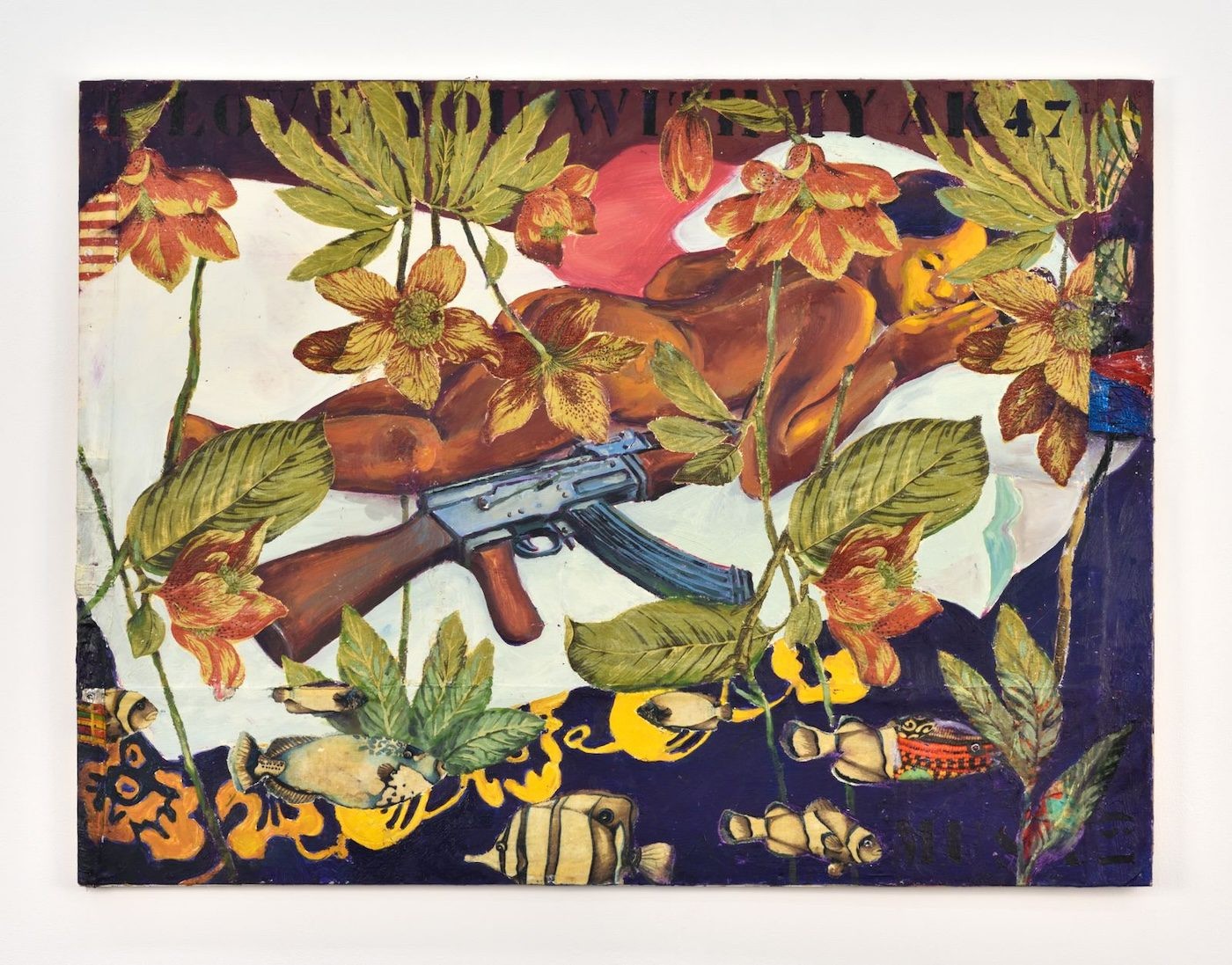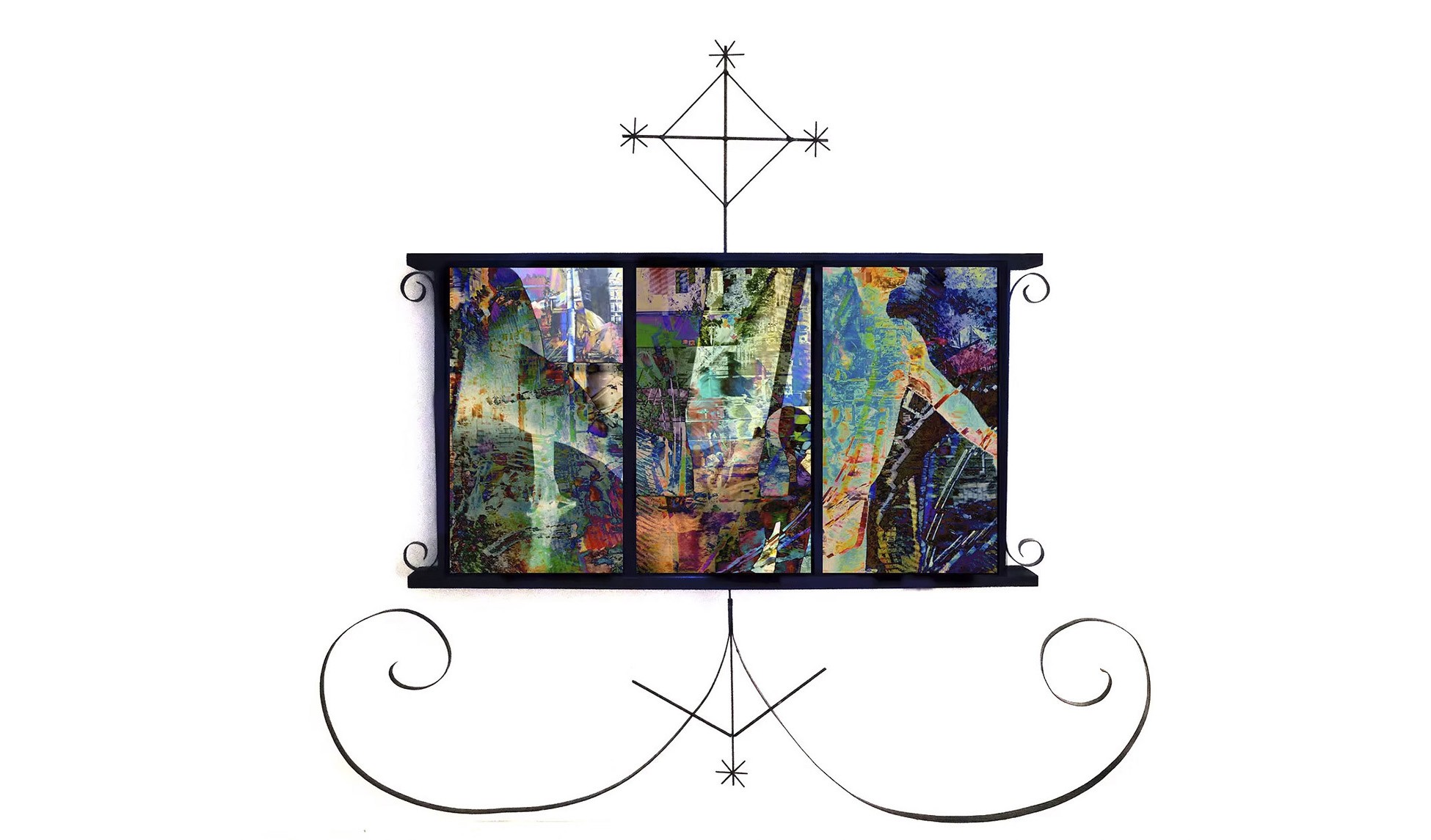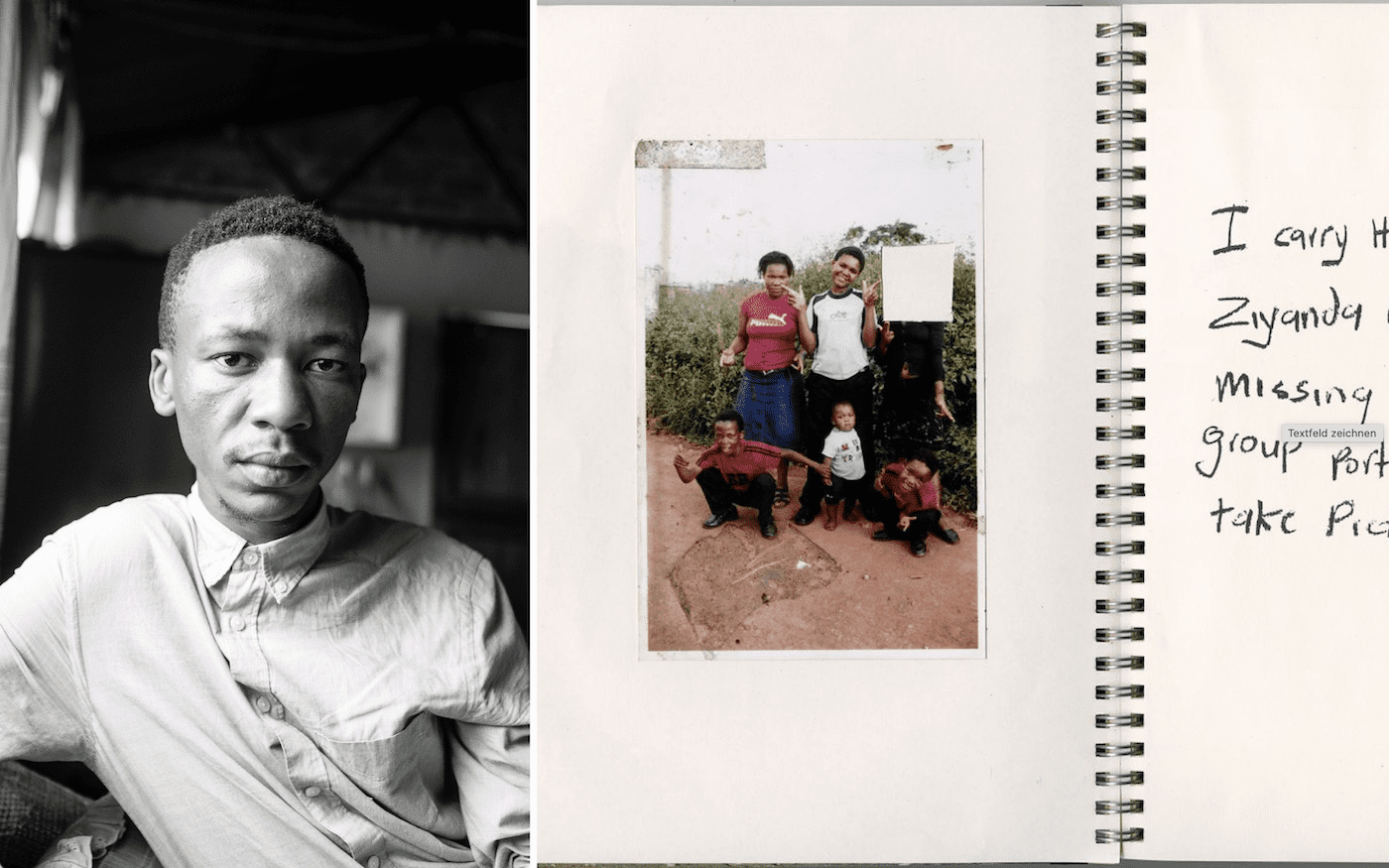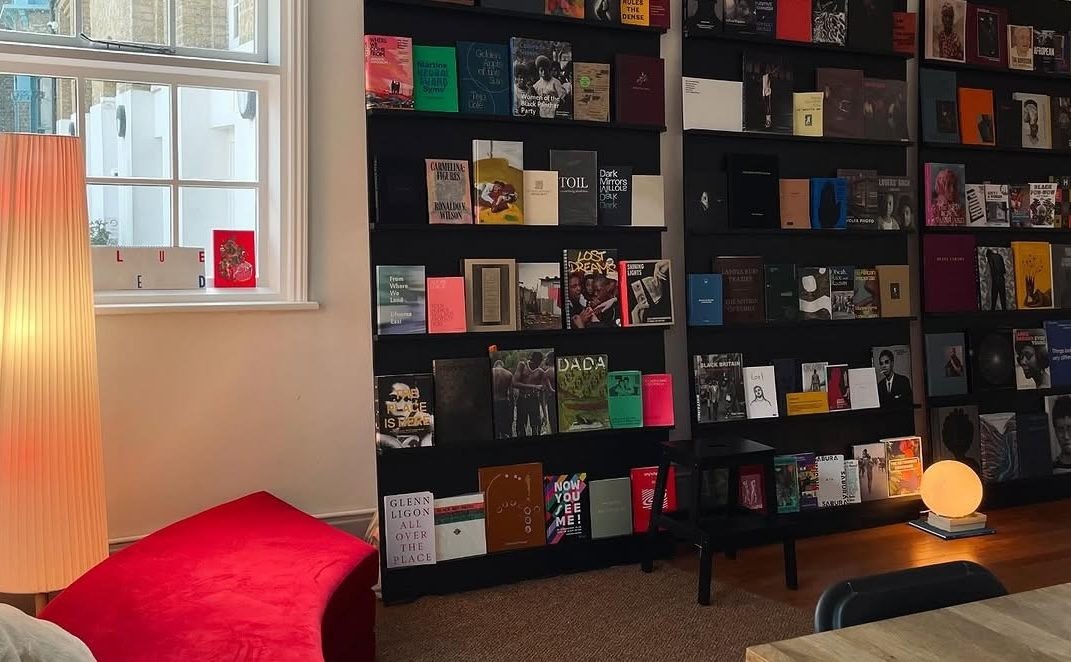The Otolith Group at the Delfina Foundation

10 December 2014
Magazine C& Magazine
8 min read
In the Year of the Quiet Sun – The Otolith Group’s 34-minute film essay on the fragile dream of pan-Africanism – is neither quiet nor sunny. If anything, it resounds with a melancholic sombreness, born of hindsight and hope – a series of echoes and reverberations that seem to animate and agitate the totems of the …
In the Year of the Quiet Sun – The Otolith Group’s 34-minute film essay on the fragile dream of pan-Africanism – is neither quiet nor sunny. If anything, it resounds with a melancholic sombreness, born of hindsight and hope – a series of echoes and reverberations that seem to animate and agitate the totems of the past so that they are no longer still or silent. At the heart of the film is an astronomical conceit. It relates to an intermittent solar phenomenon – occurring in an eleven-year cycle – when the sun’s surface cools sufficiently to allow scientists to study it. During one such period, between November 1964 and November 1965, many countries, including emerging independent African states, issued commemorative stamps to mark this significant moment. These spheres of saturated yellow and red with spiky, radiating rays – reproduced in the film – seem to shine a beneficent light onto the orbiting earth. But down below, despite similar philatelic symbolisation – stars, spheres, roundels and flags proliferate on the commemorative and celebratory stamps of decolonisation and independence – the territorial and political transformation of the unquiet continent far exceeds the capacity of these miniscule propaganda prints to adequately tell its tale.
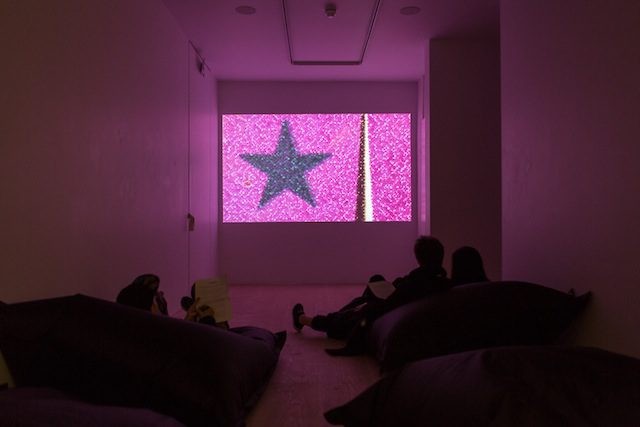
The Otolith Group, In the Year of the Quiet Sun Courtesy of Delfina Foundation/Tim Bowditch
It is this disjunction between the minute materiality of the postage stamps and the epic events they commemorate that the film dramatises so brilliantly. Taking its formal cue from the period-specific design and display value of these small but significant prints, In the Year of the Quiet Sun blows up the scale of the stamp, allowing it to fill the screen. Stamp and screen become one, flattening out and filtering the archival and documentary footage with which it is interwoven and juxtaposed. The stamps themselves are interesting: we notice their schematic design, the simplified graphics of 1960s commercial art and advertising; and the standardised lettering and modernist fonts which situate them firmly in the American context from which they were generated and distributed. Why, asks the narrator, are the symbols of pan-African liberation and decolonisation designed on Wall Street? Who is the “New York Philatelic Society”? What is the pan-African Pop that the stamps seem to symbolise and suggest? These are not only issues of design and decorum. They point to the question of power and the fraught issues of allegiance and alignment for the emerging African nations, poised during the early years of the Cold War between their old colonial occupiers (from which they needed to liberate themselves, mentally and economically) and the new power brokers of East and West, each vying for prominence and influence. At the same time they signal the formal and symbolic languages through which pan-Africanism found its robust, if short-lived, voice.
At times the film probes and problematises the visual language of the stamps through extraction and enlargement. Take for example the stamp designed to mark Ghana’s opening of parliament in 1957 which incorporates a photograph showing Queen Elizabeth II on the throne flanked by newly-empowered Ghanaians attired in national dress and British military personnel in uniform. The tiny grainy photograph embedded in the heart of the stamp grows to fill the screen. Its black-and-white facticity echoes with the documentary footage used throughout the film, while the interspersed stamps punctuate and puncture its flow. For, In the Year of the Quiet Sun moves between the scanned flatness of the commemorative stamp and the apparent veracity and three-dimensionality of “official” filmed coverage of “news-worthy” events.
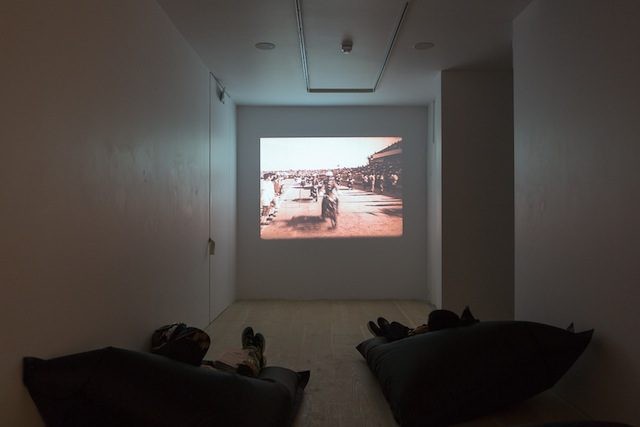
The Otolith Group, In the Year of the Quiet Sun Courtesy of Delfina Foundation/Tim Bowditch The archival footage ranges from theBandung conference of non-aligned states in 1957 to Africa Freedom Day in Ghana in 1959, from the OAU conference in Addis Ababa in 1963 to the commemoration of the Volta River Project in 1966. In the spliced reportage, extracted segments of history are mediated via the dulcet tones of Pathé News and the distinctive accents of the BBC, creating a parade of public figures that come to stand for the historical events themselves. But the partiality of history (all male, all Anglophone, all suited and silked) is suggested by the seepage from scanned stamp to found footage. For a filter of colour, drawn from the chromatic intensity of the miniature stamps (themselves peripatetic palimpsests overprinted with numbers, letters and lines), washes over the documents of history creating a coloured haze or tint that flattens out and challenges their perceived veracity. The Pop palette – so evident in the postage stamps – seems to permeate the tonality and timbre of the documents of history. Awash with colour (vivid greens, putrid pinks, tangy oranges, mauves and yellows) the events of the past are here filled in with the period-specific tints that their black-and-white neutrality appears to mask. That the postage stamp should provide the iconic and material base for this filmic revisitation of the moment of decolonisation is interesting. And poignant, especially given that we are at the brink of its immanent obsolescence. We rarely see stamps in usage nowadays. Supplanted by the anonymity and mechanical efficiency of the franking machine that spits out our bank statements and junk mail with a charmless uniformity, stamps are fast becoming a thing of the past. Used on the occasional postcard or intermittent private letter, the printed postage stamp is an exotic remnant of a form of epistolary and economic exchange that barely survives, supplanted for the most part by email, Instagram, Internet banking and Skype. And so it’s an apt moment to write the eulogy of the stamp. First regulated and standardised in Berne in the 1870s by the Universal Postal Union, stamps came to symbolise the modern network of international relations that capitalist modernity heralded. They were designed to both register national identity (with their heads of state, famous figures and “indigenous” flora and fauna) as well as secure universal markers of value so that goods and greetings could be efficiently sent and received. They depended on the industrial processes of printing and transportation that characterise the modern world. They registered the flow of money and unprecedented movement of people across an expanded globe in which currencies and cartographies were shifting. As such, they belong firmly in the culture and context of modernity. So too does the still-hopeful moment of decolonisation, aptly registered in the language and materiality of the circulating commemorative tokens, whose colour-coded shape and format (oddly global in design and resonance) provide material residues of the cataclysmic historical events that the newsreels so politely (and partially) relayed. That the stamps themselves are over-determined signifiers whose design and imagery situate them firmly within the languages of modernism, points to the humanist universalism that informed the rhetoric of liberation and human rights so evident at Bandung and beyond. It is this that In the Year of the Quiet Sun so subtly teaches us. Decolonisation and modernism, the mythic and the minute cohabit on the screen so that their relationship is both exposed and questioned. Whether scanned or found, the film places the stuff of history before us, allowing the dynamics of diminution and enlargement, explication and exploration, flatness and depth to oscillate and interact in open but choreographed juxtaposition. Shown at the Delfina Foundation in London alongside the Otolith Group’s own selection of formative screen-based work, each of which registers either the moment of decolonisation or anti-colonial struggles and their traces, the effect is powerful. The installation includes René Vautrier’s searing 1950s indictment of the French instrumentalisation of colonial peoples; Olga Poliakoff’s short montage of drawings produced by exiled and orphaned Algerian children; Harun Farocki’s late 1960s agitprop meditation on news manipulation and control; and Bejamin Tiven’s recent exploration of technology and the archive in Kenya. All of these provide the curatorial framework through which the Otolith Group prefers to be seen. The effect is exquisite, the affect tragic, the experience timely."In the Year of the Quiet Sun" - The Otolith Group, Delfina Foundation, London: October 10 - November 8, 2014 "In the Year of the Quiet Sun" - The Otolith Group, Casco - Office for Art, Design and Theory, Utrecht: November 14, 2014 - January 25, 2015
Tamar Garb is Durning Lawrence Professor in the History of Art at the University College London. Her research interests have focused on questions of gender and sexuality, the woman artist and the body in nineteenth and early twentieth century French art and she has published extensively in this field.
Read more from

Jazsalyn’s A(spora): On the Gullah Geechee Corridor
